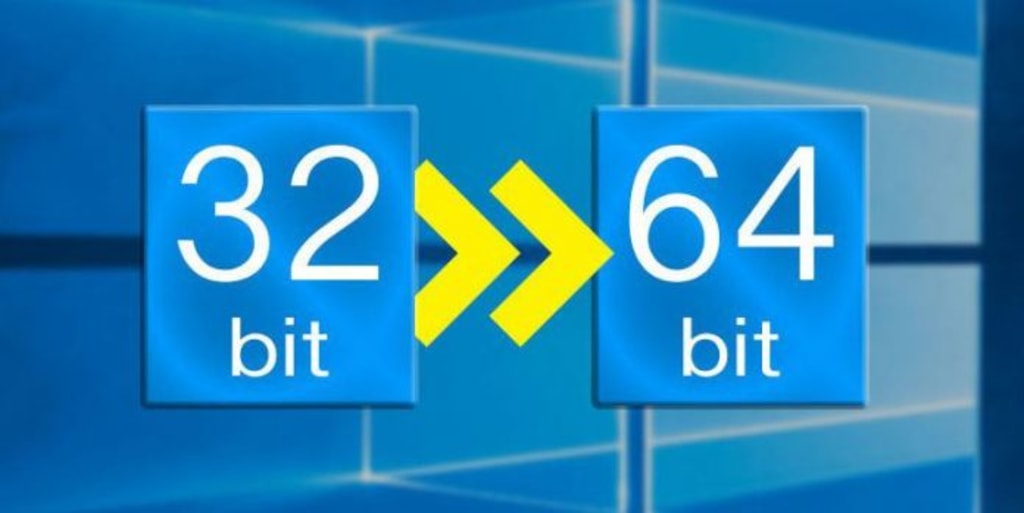How To Upgrade from 32-bit to 64-bit in Windows 10
When Microsoft came up with Windows 10, it offered a free update to the genuine Windows 7 or Windows 8 users. Similar to the previous releases, the new Operating System comes with the 32-bit and 64-bit architecture versions

Whereas, upgrading from Windows 10 Home to Windows 10 PRO version is not free of cost. Most of the people will not be familiar that Microsoft allows its user to upgrade from the 32-bit version to 64-bit free of cost.
If you have a 32-bit version of Windows 7 or 8.1, when you upgrade it to Windows 10 it will still be a 32-bit version. Even if the processor can handle 64-bit version, you will be stuck with the 32-bit version of Windows 10. But, there is a solution to this problem. You can install the OS and reconfigure the apps and settings to get the 64-bit version.
Basic Requirements To Convert 32-Bit to 64-Bit Windows 10
The first requirement is to know if your PC is compatible with the 64-bit version. You can know this by following the below steps:
- Open the Settings App from Windows or using Win Key + i.
- Click on the Systems Icon.
- Click on About.
Look under the System Type. If it displays 32-bit OS, the x64-based processor then it can run a 64-bit processor version. If it shows a 32-bit version, x86-processor, it means that the PC doesn’t support 64-bit OS. By this, you can determine if upgrading to the 64-bit processor will be compatible with your PC or not.
If you see a 64-bit version, the x64-based processor then you need not follow the article as your CPU is already running the 64-bit version. For the other two specifications, follow the article below to shift from existing 32-bit to 64-bit version of Windows 10.
Steps To Upgrade
Before you start with the steps, back up all your files and data because you need to make a clean installation to upgrade. This process will wipe all the data and programs present on the hard disk.
Step 1: If you are still on the Windows 7 or 8.1, you need to upgrade to Windows 10. To do so, navigate to Settings -> Update and Security -> Activation. If you have a 64-bit version currently, you will directly get the 64-bit Window 10 OS and you can ignore the below steps. If you have a 32-bit version, follow the steps to convert it to the 64-bit version.
Step 2: Download the Windows Media Creation Tool once you have the Windows 10 OS running. You need to download the 32-bit version of the application.
Step 3: Run the tool. Select ‘Create Installation Media for another PC’ which will burn a disc or create a USB drive with Windows 10. Select ‘64-bit (x64) architecture’ from the list of architecture options.
Step 4: Before doing this step, make sure you have backed up your data as it will be deleted entirely. Boot the installation media and select ‘Custom Install‘ to install the 64-bit Windows 10. When prompted for an activation key (twice) you just need to skip as Microsoft will validate it later automatically. Bingo! You are running the 64-bit version of Windows 10.
If you need to go back to the 32-bit version, in the Media Creation Tool, select 32-bit instead of 64-bit and perform the same steps as above. If your processor supports the 64-bit version then you should opt for it as it is a higher-end architecture that provides more compatibility with high-end apps.
Content owned by: Infomance






Comments
There are no comments for this story
Be the first to respond and start the conversation.